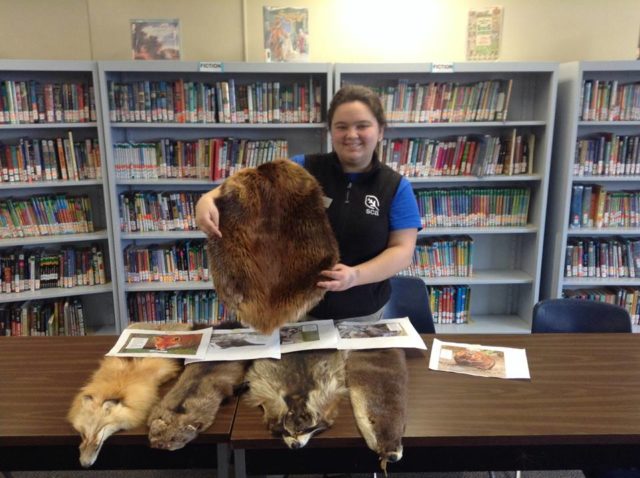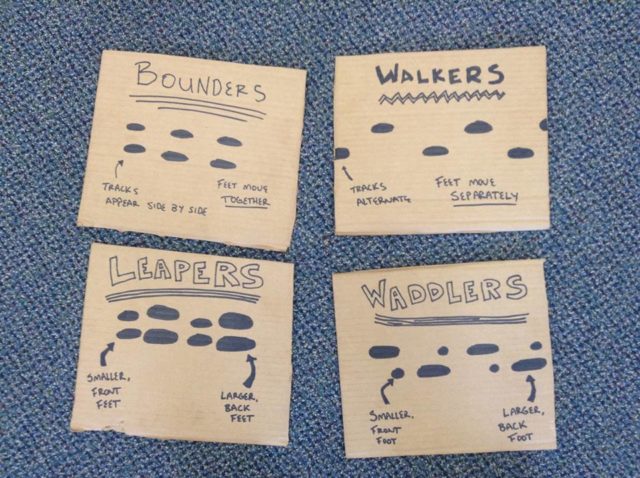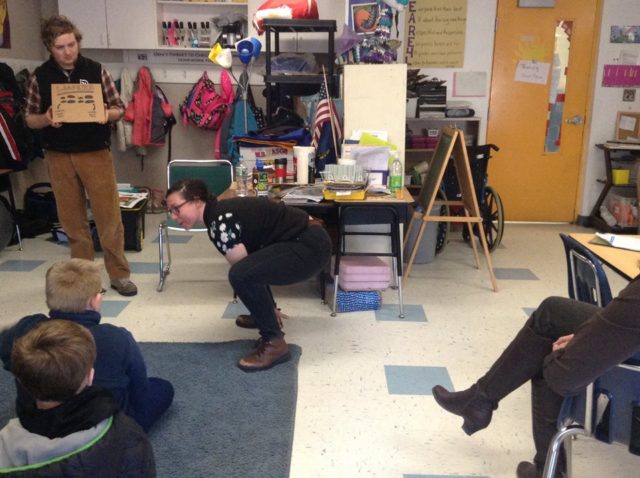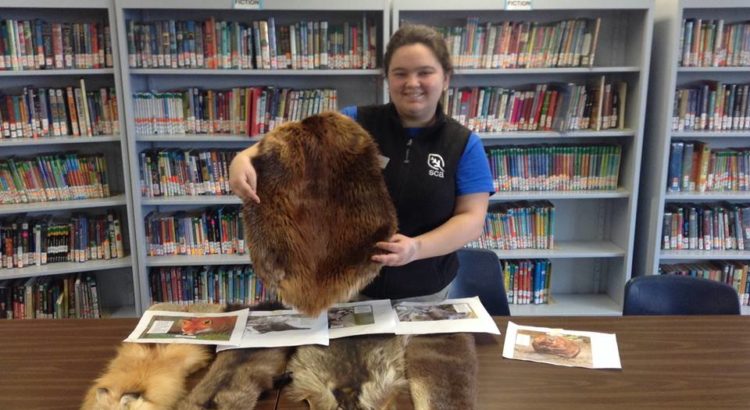Does anyone know what a furbearer is? Yeah I had that look on my face to when I was asked that question for the first time. A furbearer is not a type of bear but an animal that bears fur. The SCAers main goal of this lesson was for students to understand that furbearers are animals that are hunted specifically for their cozy furs.
We took the students in our time travel puppet show to the 1600’s when the story of the furbearers started in North America and most importantly to a time when you went outside for entertainment!
Mother Nature narrated the exhilarating story of the furbearers début into the New England history books. Furbearers like Mr. Raccoon and Mr. Fox (who is taking a nap on the table) were noticed for their warm furs by the French settlers. The furbearers pelts became very valuable because they could be used in a variety of ways such as, clothing for warmth or currency to buy food and other necessities. Without hunting regulations most of the furbearers were eliminated from the state of New Hampshire. Good thing these furbearers have made a come back after hunting regulations were put in place or we would not have opportunities to see beavers or fishers today!
The furbearers were a very important part of the colonization of the New England area and the fourth graders got that concept from our outstanding puppet acting skills. If you would like to steal the script to the puppet show click here!

Thank you New Hampshire Fish and Game for lending us the Furbearer Kit; the SCAers like to introduce new friends to the students whenever we can! The five furbearers we focused on for this lesson were the red fox, fisher, raccoon, river otter, and beaver. Miss Randi discussed the importance of each furbearer, the different features of their furs, and the reasons they were hunted. Now there is a two finger touch rule with the furs – but how many fingers do you think a fourth grader would use?
By the touch of the fur you can tell why trappers hunted these particular animals, and at our next station Pete and Brittany discuss the four main track patterns that trappers will follow to find these furbearers.
Let’s take a track pattern! Identifying an animal tracks in the wild is pretty tricky. There are too many tracks to count on just two hands, you would need your toes and then the rest of you extended families toes to count the amount of animals tracks that can be identified. A way to narrow down what animal a trapper might be hunting is to identify the animals track pattern. The four main track patterns are:
- Bounder: Fisher or River Otter
- Walker: Red Fox
- Leaper: Snowshoe Hare (not a furbearer, just a good example of a leaper)
- Waddler: Beaver or Raccoon
Have you seen any of these track patterns in the area? If not, that’s okay, you can look at the next picture and laugh at the SCAers as they attempt to show the students how furbearers create these different track patterns.


Here is where we could insert pictures of the students turning into animals to create track patterns, but we will leave the embarrassing evidence focused on the SCAers. The students were very excited to act like animals and the teachers appreciated that we used up their high energy.
It is always a long day when we are teaching three classes of fourth graders about historical animals of New Hampshire. And as an SCA NH AmeriCorps member you hope that your cabin mates have already built a fire in the wood stoves by the time you get home to Bear Brook State Park so you can stay warm in the cold New England winters just like the furbearers!

